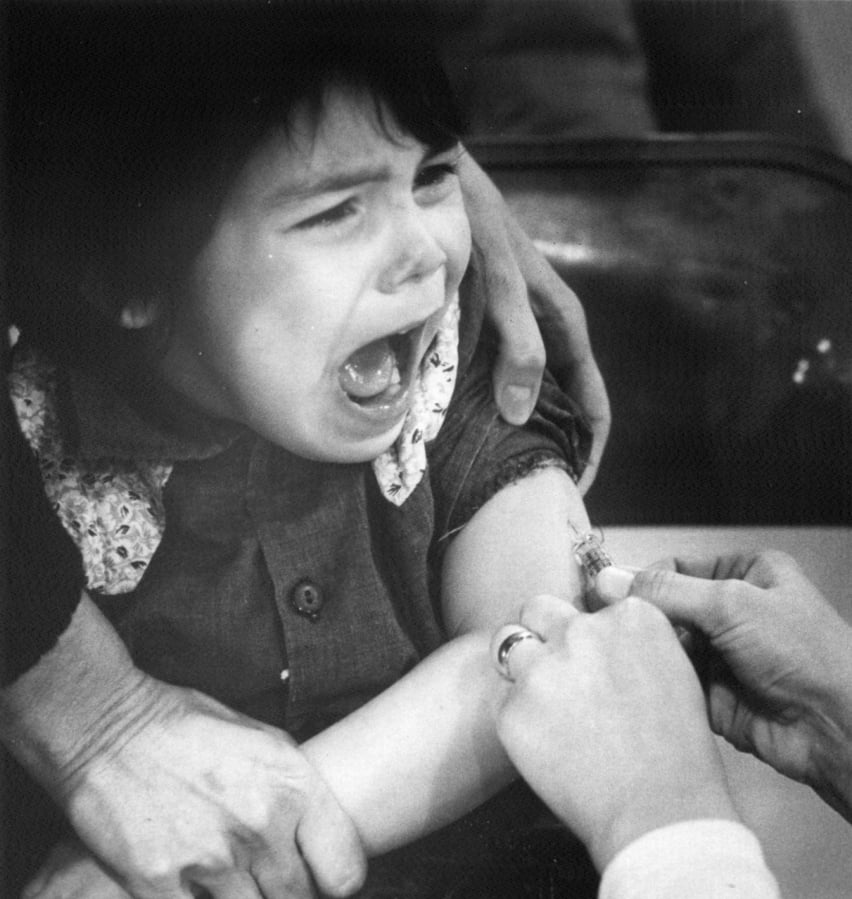Mission accomplished, the Centers for Disease Control and Prevention declared in 2000. The measles had been successfully eliminated in the United States.
The center accredited the success “to a highly effective vaccination program in the United States, as well as better measles control in the Americas region,” according to the CDC’s website.
But the victory, as Southwest Washington residents know firsthand, was short-lived.
At last count, the ongoing measles outbreak in Clark County is up to 43 confirmed cases. Of those cases, 37 were unvaccinated patients — for the other five, their vaccination record cannot be verified one way or the other, and one patient received only one dose of the MMR vaccine, according to Clark County Public Health.
Vaccines are a powerful weapon against the highly contagious disease. But increased suspicion of vaccines has suppressed immunization rates, to the point that the World Health Organization ranked vaccine hesitancy as one of the top 10 threats to global health in 2019.
Dr. Alan Melnick, Clark County health officer and public health administrator, told The Columbian that exemption rates had started to crawl back up in part because of our collective short-term memories of what these diseases meant: “Because of immunizations, we don’t see these diseases much,” Melnick said. “They don’t remember the iron lung for people with polio.”
To combat that effect, it’s useful to take a long-term look at the impact of the measles and other infectious diseases.
Clark County enjoys a rich and well-recorded history in that regard. The Hudson’s Bay Company’s Fort Vancouver is in some accounts considered responsible for carrying the measles from New York to the West Coast.
Ye olden measles
In “Early Medicine in the Pacific Northwest,” Vancouver resident John C. Brougher, M.D., detailed the history of common ailments that plagued the early European explorers of the West Coast.
Measles were big in the late 1700s and the 1800s. So were malaria, tuberculosis, smallpox, enteritis, gonorrhea and syphilis, among others. Treatments were rudimentary.
Brougher detailed the medical toolkit carried by Lewis and Clark on the first overland expedition to the Pacific Northwest in 1804.
“The list of medical supplies obtained for this expedition included such drugs as cream of tartar, powders of jalap, rhubarb and ipecac, gum camphor, gum asafoetida, calomel, and several ointments,” Brougher wrote in his anthology.
“For surgery, these men took several pocket instruments, a set of tooth instruments, three lancets for bleeding, and a tourniquet.”
Settlement in Vancouver is partially responsible for the 1847 measles outbreak that decimated the Cayuse tribe and set off the Whitman Massacre. There’s evidence that overland travelers from Fort Nez Perce in southeastern Washington to Fort Vancouver were carriers of the disease, Dr. Robert T. Boyd, an anthropologist at Portland State University, noted in his 1994 publication.
Dr. Forbes Barclay, a physician at Fort Vancouver, wrote in the 1840s that “the measles have been known to prevail in the Columbia in 1812 — supposed to have been carried thither by the H. Bay Company express from York Factory where it prevailed at the same time.” (Boyd noted that Barclay may have accidentally inverted the date and meant to write 1821.)
At the time, measles were fatal to about 10 percent of the people who contracted it, Boyd reported.
During the 1847 outbreak, 39 deaths were reported in Vancouver over a three-month span, including 11 in one week.
On June 7, 1888, the Clarke County Register reported on a particularly rough season that effectively halted the school year: “a furious epidemic of measles. In one schoolroom, there were forty-four cases of measles out of a total of fifty-five pupils. The St. Lukes Episcopal school was finally reduced to two pupil and that school has also closed up. It is safe to say that at least 500 cases have been reported this spring.”
For nearly a century after that, most everyone in the United States contracted the measles as a child — the CDC estimates in the decade leading up to the vaccine in 1963, between 3 and 4 million people in the country got the measles each year. Of those, 400 to 500 people died, 48,000 were hospitalized, and 1,000 suffered encephalitis, or swelling of the brain.
Consider the surreal lead in the story headlined “MEASLES INCREASE SEEN HERE,” which appeared in The Columbian on July 2, 1957, and assured readers that a ninefold increase in measles cases shouldn’t cause any concern.
“Measles cases reported so far to the County Health Department this year total 288 — nine times the incidence of measles outbreaks reported in the county last year at this time — there is no epidemic and no cause for alarm, County Health Officer Dr. Morris Chelsky assured residents Monday.”
The Columbian’s health coverage shifted markedly around the early 1960s. Between 1953 and 1963, the paper ran 20 articles about measles or polio outbreaks. From 1963 to 1973, the diseases were mentioned in just seven articles. Of those, four were reminders to take advantage of local vaccination events. The other three articles addressed an outbreak of measles in 1971 that affected 10 people.




